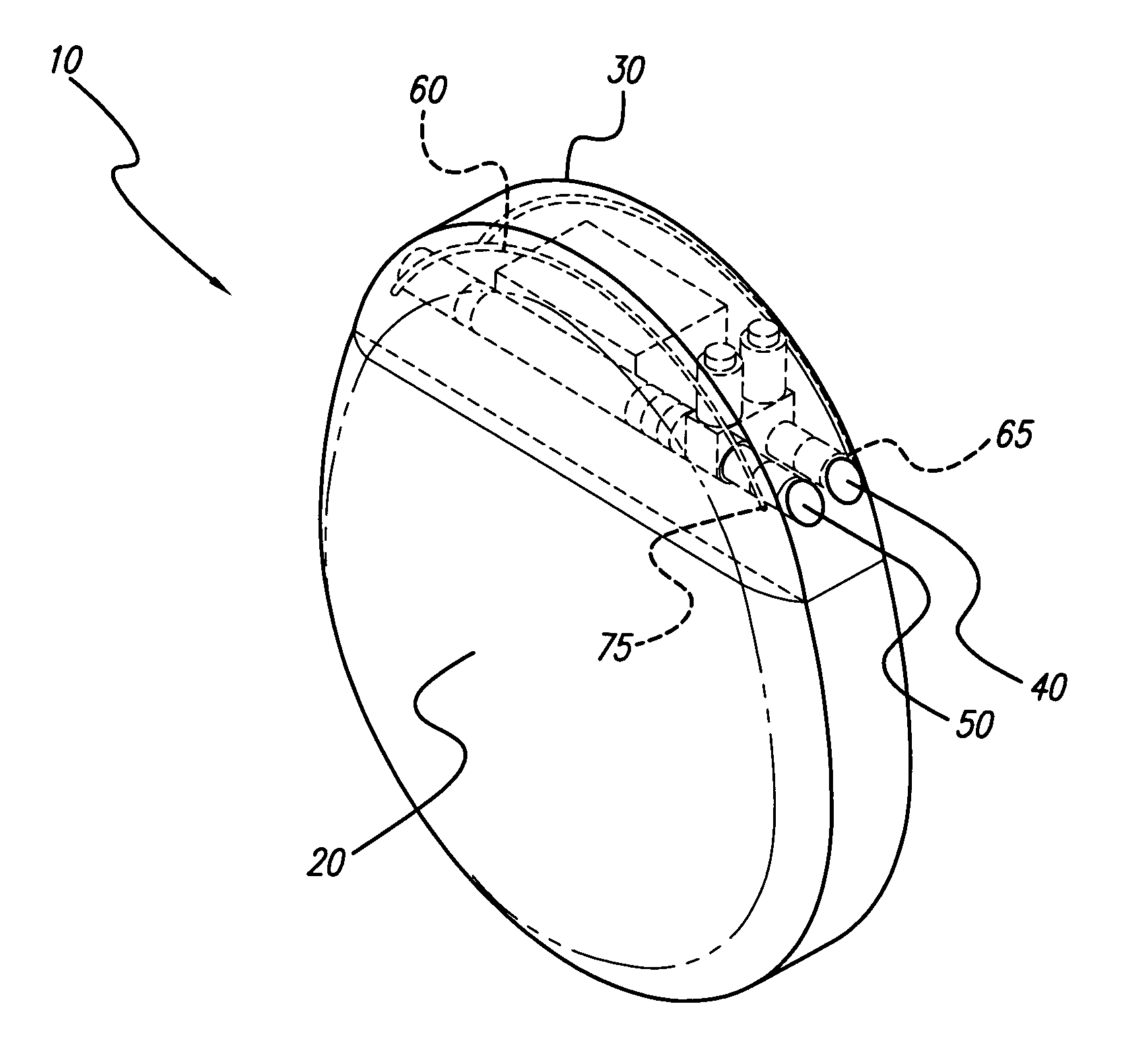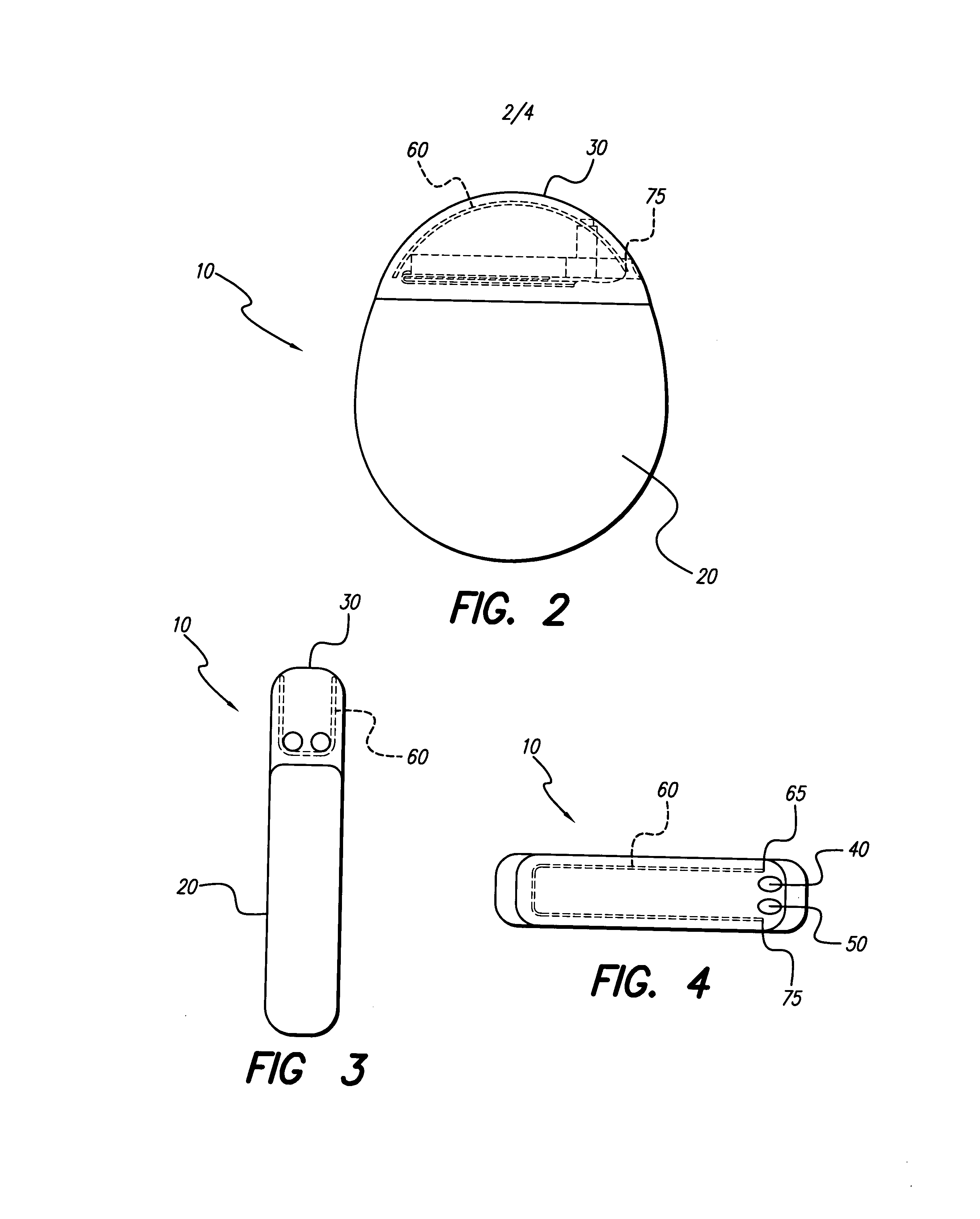Folded monopole antenna for implanted medical device
a medical device and antenna technology, applied in the field of implantable medical devices, can solve the problems of imposing regulatory limitations on permissible transmission frequencies and radiating power, affecting the use of active elements, and reducing the processing capacity, so as to avoid the use of additional power-consuming, prolong the current path, and prolong the antenna. the effect of the current path
- Summary
- Abstract
- Description
- Claims
- Application Information
AI Technical Summary
Benefits of technology
Problems solved by technology
Method used
Image
Examples
Embodiment Construction
[0034]The following description is of the best mode presently contemplated for carrying out the invention. This description is not to be taken in a limiting sense, but is made merely for the purpose of describing the general principles of the invention. The scope of the invention should be determined with reference to the claims.
[0035]A self-resonating, folded monopole antenna system for use in an implantable medical device is disclosed herein. The antenna is intended to be used with a programmer transceiver to down-link data to the medical device or up-link telemetered data from the medical device to the programmer. In this improved antenna design, the metal portion of the device housing is employed as a ground plane of the antenna. In addition, to provide added antenna length within the confines of the device housing, the monopole antenna is folded once to conform to the periphery of the epoxy portion of the housing. These features solve the unique challenges of having to enclose ...
PUM
 Login to View More
Login to View More Abstract
Description
Claims
Application Information
 Login to View More
Login to View More - R&D
- Intellectual Property
- Life Sciences
- Materials
- Tech Scout
- Unparalleled Data Quality
- Higher Quality Content
- 60% Fewer Hallucinations
Browse by: Latest US Patents, China's latest patents, Technical Efficacy Thesaurus, Application Domain, Technology Topic, Popular Technical Reports.
© 2025 PatSnap. All rights reserved.Legal|Privacy policy|Modern Slavery Act Transparency Statement|Sitemap|About US| Contact US: help@patsnap.com



